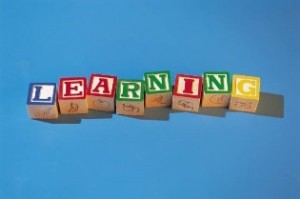 I was speaking with a client at the end of 2013 who was working on finalizing training plans for 2014. He stated that there appeared to be so many training needs and desires based on a recent employee engagement survey that he just didn’t know where to start! He had a limited budget but wanted to satisfy as many people as possible. He asked my advice on what would be most important to cover in training based on my knowledge of the organization. I asked him what the organization’s goals were for 2014 and beyond. He listed a number of goals that were discussed at a mid-year strategy session. And there was our starting point I told him!
I was speaking with a client at the end of 2013 who was working on finalizing training plans for 2014. He stated that there appeared to be so many training needs and desires based on a recent employee engagement survey that he just didn’t know where to start! He had a limited budget but wanted to satisfy as many people as possible. He asked my advice on what would be most important to cover in training based on my knowledge of the organization. I asked him what the organization’s goals were for 2014 and beyond. He listed a number of goals that were discussed at a mid-year strategy session. And there was our starting point I told him!
As a best practice, align training needs to what is required to meet organizational goals. This provides a number of benefits, including:
- Making a better business case for training investment
- Ensuring employees are equipped to help the organization meet goals
- Providing employees skills they will need for the future
- Enabling the organization to better meet long term goals by ensuring employees have the skills and knowledge to do what needs to be done
- Engaging executives and leaders in training (since by investing in training of employees, they will be able to meet their goals)
In order to align training needs to organizational goals, you will need an understanding of the long-term goals of the organization and will need to understand what is required to reach those goals. For example, in my client’s case, the organization is a pharmaceutical organization that has expanded significantly in the last year and half; more than doubling their employees and they expected to grow over the next few years. Additionally, they were moving from research to product development, an area in which they had not worked prior. Two needs were identified as essential:
- The ability for individuals to take on management roles within the organization
- The ability for individuals to manage projects with tight deadlines
This prompted my client to look at the following skills and levels of competency:
- Supervisory skills (many of those who would be moving to management roles were scientists and researchers.)
- Project management skills (a disciplined approach to managing product development projects would be essential in the future.)
Based on this research, he would be able to develop comprehensive training programs to help the organization meet their goals.
To summarize, as a best practice human resources and other training professionals should be meeting with executives and other leaders to understand strategic goals – at the organizational level but also strategy for each division or business unit. Use this information to develop a listing of necessary skills and knowledge that will be needed within the workforce to help achieve those goals. Determine whether those skills and that knowledge curently exists within the workforce and if it does, at what level (beginner, intermediate, advanced). Build your training plans based on getting employees the skills and knowledge needed to be successful. Certainly you may need to recruit new hires with special skills for some roles, but build up the skills of your current employees when possible. These individuals already have the institutional knowledge and understanding of the culture and bring much to the organization.


